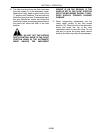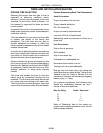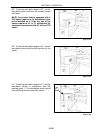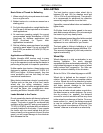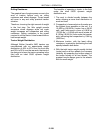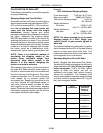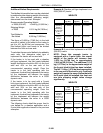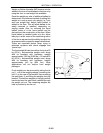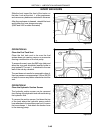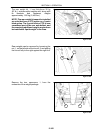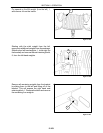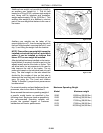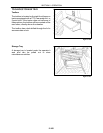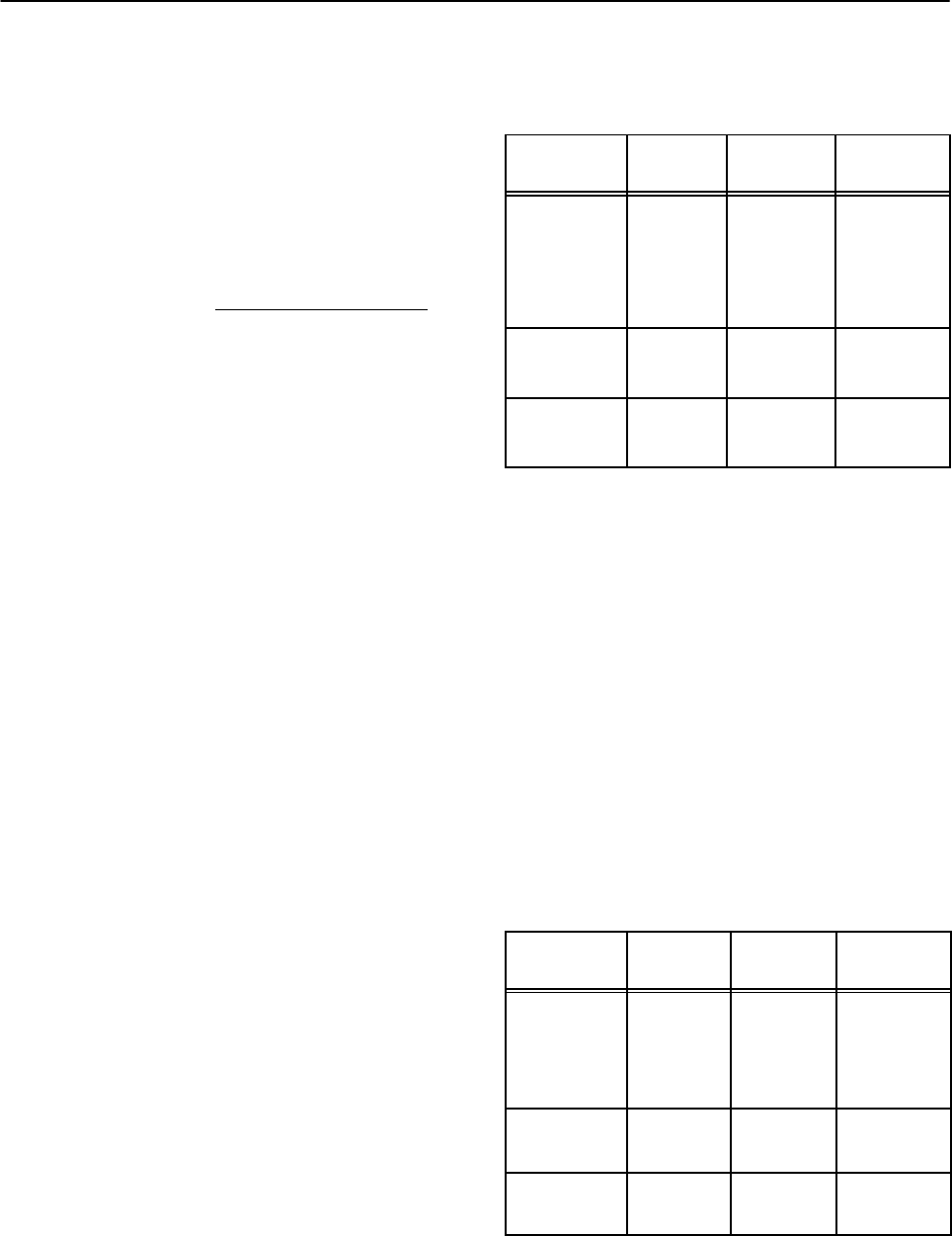
SECTION 2 - OPERATION
2-160
Additional Ballast Requirements
Total ballast to be added can now be calculated
by subtracting the shipping weight of the tractor,
from the recommended operating weight,
determined from the chart. Example:
Recommended Operating Weight
of 2335 (335 HP) 14,440 kg (31,825 lbs.)
Shipping Weight
of 2335 11,231 kg (24,760 lbs.)
Total Ballast to
Be Added 3,209 kg (7,065 lbs.)
The figure of 3,209 kg (7,065 lbs.) i s the total
amount of ballast to be added to the tractor to
get it to 43.1 kg (95 lbs) per horsepower. This
total ballast figure now needs to be divided
between the front and rear axle.
To calculate the amount of ballast to be added to
each axle, first determine what type of
implement the tractor will be used with.
If the tractor is to be used with a drawbar
pull-type implement, the field ready ballasted
weight distribution should be 55% on the front
axle and 45% on the rear axle of the
recommended operating weight. Once the
tractor is in the field operating with the
implement, the draft load imposed on the tractor
by the implement will balance the weight
distribution between the axles to a 50/50
dynamic ratio.
If the tractor is to be used with a 3-point
hitch-type implement, the field ready ballasted
weight distribution should be 65% on the front
axle and 35% on the rear axle of the
recommended operating weight. Once the
tractor is in the field operating with the
implement, the draft load imposed on the tractor
by the implement will balance the weight
distribution between the axles to a 50/50
dynamic ratio.
The following charts detail the proper front to
rear ballast for a drawbar application and a
3-point hitch application based on the previous
examples.
Example A: Drawbar pull-type implement on a
2335 (335 HP) tractor.
WEIGHTS
Total
kg (lbs.)
Front
kg (lbs.)
Rear
kg (lbs.)
Optimum
Operating
Weight &
Percentage
43.1kg x 338
@(95lbx
335)
14,440kg
(31,825lbs.)
7,942kg
(17,503 lbs.)
6,498kg
(14,322lbs.)
Scaled
Shipping
Weight
11,231kg
(24,760lbs.)
7,625kg
(16,017lbs.)
3,966kg
(8,743lbs.)
Additional
Ballast
Required/Axle
3,209kg
(7,065lbs.)
677kg
(1,486lbs.)
2,046kg
(5,579lbs.)
Example B: 3-point hitch implement on a 2335
(335 HP) tractor.
NOTE: Since this example tractor is
equipped with a 3-point hitch, the overall
weight of the tractor will increase from
11,255 kg (24,760 lbs.) to approximately
11,945 kg (26,333 lbs.). The additional 713.5
kg (1,573 lbs.) is the approximate weight of
the 3-point hitch kit that has been installed.
The full 713.5 kg (1,573 lbs) has been applied
to the rear axle of the tractor only. Front axle
weight will remain the same. Notice that with
the 3-point hitch kit installed, the front and
rear axle shipping weight ratios change
significantly.
WEIGHTS
Total
kg (lbs.)
Front
kg (lbs.)
Rear
kg (lbs.)
Optimum
Operating
Weight &
Percentage @
43.1kg x 338
(95 lbs x 355)
14,440kg
(31,825lbs.)
9,386kg
(20,686lbs.)
5,054kg
(11,139lbs.)
Scaled
Shipping
Weight
11,945kg
(26,333lbs.)
7,265kg
(16,017lbs.)
4,679kg
(10,316lbs.)
Additional
Ballast
Required/Axle
2,495kg
(5,492lbs.)
2121kg
(lbs.)
375kg
(823lbs.)



